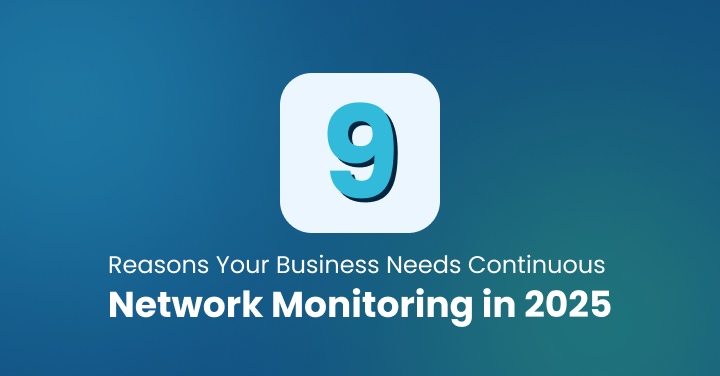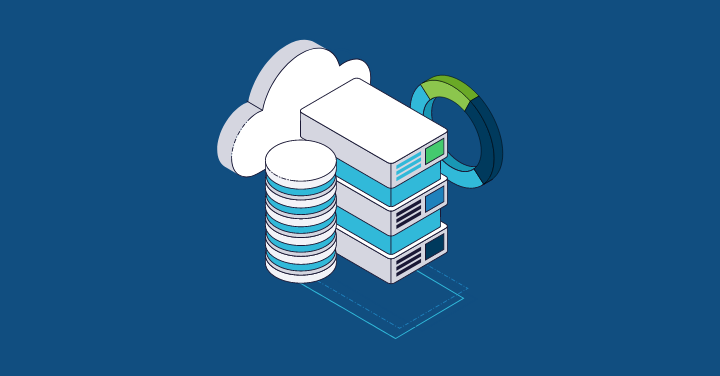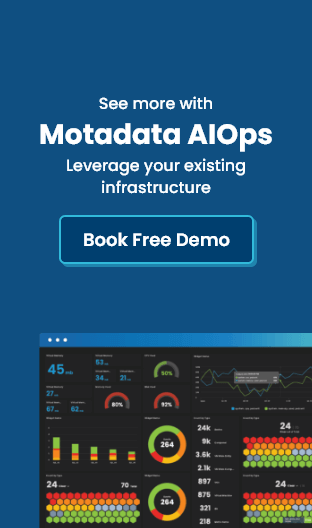Cloud adoption has reached a tipping point in 2025, with over half of the enterprise (and SMB) workloads currently being processed in the cloud. With that said, 84% of cloud adopters cite managing cloud spend as the top challenge.
Cost overruns are an ongoing pain point, owing to complex, hourly usage-based billing models and decentralized management of cloud accounts.
Traditional cloud cost monitoring relies on historical data, resulting in delayed alerts and overspending, and is therefore a reactive method. And predictive cloud monitoring alerts forecast potential overspending before it occurs. They achieve this by using historical data and AI-driven predictions to forecast future cloud expenses.
With Motadata’s predictive cloud monitoring automations, your company gets smarter predictive insights to stay ahead of cost overruns.
What Are Predictive Cloud Monitoring Alerts?
Cloud monitoring has become pivotal in business operations, with its value in the market predicted to grow from $3.23 billion (2025) to $13.60 billion (2032).
Predictive cloud monitoring alerts are AI-powered tools that proactively forecast potential issues in your cloud setup. Unlike reactive monitoring systems, predictive monitoring provides early warnings derived from usage and spending trends, enabling your IT team to implement control and management protocols.
Reactive alerts trigger only after a predefined threshold (for spend) is breached – after a problem has occurred.
On the other hand, predictive alerts utilise data analytics to anticipate when thresholds may be breached, facilitating prevention rather than reaction.
A combination of trend analytics and AI-based predictive monitoring identifies recurring overspending patterns and gradual changes in the usage of cloud resources. This enables the timely prediction of anomalies or cost spikes, generating alerts well before the company exceeds its cost thresholds.
6 Predictive Cloud Monitoring Alerts to Prevent Cost Spikes
Six key alerts cover all bases of cloud spending, enabling you to optimize usage costs and stay within budget:
Alert #1 – CPU Utilization Trend Alerts
A Cast AI report highlights that only 13% of commissioned CPUs are actually utilized.
CPU spikes trigger autoscaling and resource overprovisioning in cloud environments, leading to unplanned surges in CPU usage that increase bills while reducing app performance.
How Predictive Monitoring Fixes Traditional Limitations
Static CPU limits trigger alerts only after your company crosses the predefined usage threshold. Predictive thresholds leverage AI-based data analytics and monitoring to anticipate sudden CPU spikes, generating early warnings of potential overspend. This way, you can mobilize a countering action to prevent overspending.
Example
An e-commerce website frequently experiences traffic spikes during festive seasons. Predictive cloud monitoring alerts analyze past data to forecast these surges before the season sets in. This allows IT teams to prepare the necessary infrastructure and workload optimizations in advance, helping avoid performance issues.
Alert #2 – Memory Usage Deviation Alerts
Memory-intensive workloads can cause overprovisioning or leaks, resulting in inefficient resource utilisation. These hidden costs accumulate over time, particularly with sustained heavy memory usage, which degrades your app’s performance and increases the monthly bill.
How Predictive Monitoring Fixes Traditional Limitations
AI-powered predictive alerts analyze historical trends of memory usage to detect deviations and alert you before escalation. This proactive alert helps you mobilize remedial actions, preventing costly memory spikes and optimizing resource allocation.
Example
A SaaS provider can foresee memory use surges by monitoring growing user load or faulty code. In the context of SaaS application development, early alerts help their teams optimise usage or scale infrastructure proportionately and pre-emptively, preventing excessive spending.
Alert #3 – Storage Consumption Growth Alerts
According to Forbes, 60% of corporate data resides in the cloud.
Data bloat is the accumulation of unnecessary and outdated data in your cloud storage. It occurs when unchecked storage growth leads to an increase in storage costs, causing performance issues due to slower app response times.
How Predictive Monitoring Fixes Traditional Limitations
Predictive cloud monitoring uses historical storage consumption patterns to forecast future storage needs. These AI models generate alerts before your company can cross critical storage thresholds, allowing time for planning and capacity management.
Example
It is typical to expect a storage spike in a media company’s database right before content release. Using predictive alerts helps autoscaling and data archiving to save on available space before any limit is breached.
Alert #4 – Network Traffic Surge Alerts
Cloudflare reports that the global network traffic increased by 17% at the end of 2024.
A surge in network traffic leads to increased bandwidth usage, which can easily escalate cloud expenses and introduce hefty egress charges. Unmanaged peaks in network traffic, even during peak times, strain the network resources, impact performance, and disturb the budget.
How Predictive Monitoring Fixes Traditional Limitations
Advanced predictive monitoring systems use AI models to anticipate unusual traffic behaviors early. They send alerts that warn of potential traffic spikes or deviations (like sudden traffic bursts or DDoS attempts) to allow time for timely intervention.
Example
Online retail stores running seasonal promotions often experience a significant increase in network traffic. Predictive alerts help them forecast these surges, enabling IT teams to scale their bandwidth and security measures. It prevents downtime and controls bandwidth costs.
Alert #5 – Idle Resource Detection Alerts
Unused cloud resources account for about 32% wasted cloud spend, which may include virtual machines, storage volumes, unattached IPs, etc. These aspects inflate cloud costs and lead to unexpected expenses.
How Predictive Monitoring Fixes Traditional Limitations
AI-powered predictive monitoring identifies this wasted spend by analyzing usage patterns with sustained low activity. They pinpoint these inefficiencies, alerting IT teams to initiate cleanup and rightsize before costs can increase.
Example
A company runs test instances after the development of a product. These instances remain “alive” but idle. Predictive monitoring can flag such instances that remain in the background with no current purpose, and alert the IT team to terminate them.
Alert #6 – Cost Anomaly Detection Alerts
AI-powered cost anomaly detection identifies unexpected variations in cloud spending by monitoring the usage patterns continuously. The IT team is thus notified of irregularities in cloud usage before the expenses can skyrocket and go out of control.
How Predictive Monitoring Fixes Traditional Limitations
Predictive AI models analyze historical billing data and operational trends to anticipate potential budget breaches with current usage patterns. The models are capable of differentiating between normal fluctuations and true anomalies, reducing false positives while delivering timely alerts for controlling costs.
Example
A service misconfiguration in a SaaS company may cause abnormal surges in compute or storage costs. Early alerts warning the IT team of this anomaly can help save costs by timely remediation, preventing costly overruns.
Why Predictive Monitoring Matters for Cloud Budgeting
Traditional cloud budgeting is inherently reactive; organizations respond to cost overruns after they have gone beyond budget. Predictive monitoring flips the table by:
- Enabling AI-driven, data-backed forecasts with real-time analytics on expenditure eventualities and trends
- Proactive management and optimization of cloud usage, preventing budget overruns and avoiding unexpected charges for IT teams
- Serving as vital tools in cloud governance by continuously monitoring the cloud ecosystem and providing early warnings for potential budget breaches.
- Empowering financial accountability by providing data-driven insights not only on expenses, but on wasteful usage habits as well
- Promoting better resource utilization and elevating cloud budgeting to a strategic, controlled process
Your business can easily explore smarter governance through the integration of AI in ERP systems. It demonstrates how predictive intelligence optimizes both operational efficiency and cost control.
How Motadata Enhances Predictive Cloud Monitoring
Studies show that firms lose over $14.1 billion on cloud computing because of excess resources, over and above other wasted expenditures. Motadata helps your business manage cloud expenditure smartly with three distinct features:
Advanced AI-Powered Thresholding
Motadata’s AI-driven thresholding adapts to changing cloud environments dynamically, detecting anomalies and potential issues before they cause a problem. It helps reduce false alerts and facilitates timely notifications, empowering your IT team to proactively manage costs.
Smarter Dashboards and Anomaly Detection
The real-time, customizable dashboards with Motadata provide clear visibility into cloud performance metrics. The AI-enabled anomaly detection identifies irregular patterns across all your cloud resources, enabling quicker root cause analysis and resolutions to optimize performance.
Integrated Alert Management for Cloud Optimization
Motadata provides integrated alert management that consolidates notifications from multiple sources. This reduces the alert noise, prioritizing the most critical cloud cost alarms. This streamlined system simplifies your cost optimization efforts.
Further reading: Learn how Motadata’s AI-powered monitoring systems enabled a telecom to move from reactive to resilient, predictive network monitoring setups: click here.
Enhance The Visibility of Your Cloud Costs With Motadata
Expense spikes are part and parcel of using a cloud service. However, these expenses can be managed easily by implementing predictive thresholds in cloud monitoring.
Reduced cloud overspending, enhanced operational efficiency, minimized downtimes, and enhanced security posture lead to an improvement in the overall ROI from cloud investments.
With Motadata’s dedicated predictive cloud monitoring alerts and solutions, your business can tap into proactive control and management of your cloud spending easily. Head over to our site today to explore the full stack of Motadata’s cloud monitoring features!
FAQs
Predictive cloud monitoring alerts utilise AI to analyse real-time cloud metrics and identify patterns, enabling the anticipation of cloud issues and preventing cost overruns in a timely manner.
By continuously analyzing usage trends and forecasting resource demands, predictive alerts generate early warnings of impending cost spikes. It enables IT teams to scale resources and optimize workloads.
No, predictive monitoring augments traditional reactive methods by adding data-powered foresight and early detection capabilities. Organisations can proactively resolve issues instead of responding to them after they have caused damage.
Critical metrics include CPU and memory utilization, storage usage, network traffic, and idle resources. These factors influence cost efficiency directly.
Motadata integrates AI-driven dynamic thresholding, real-time anomaly detection across the entire cloud infrastructure, and consolidated alert management. It enables you to forecast issues and cost overruns while simplifying your incident response.






